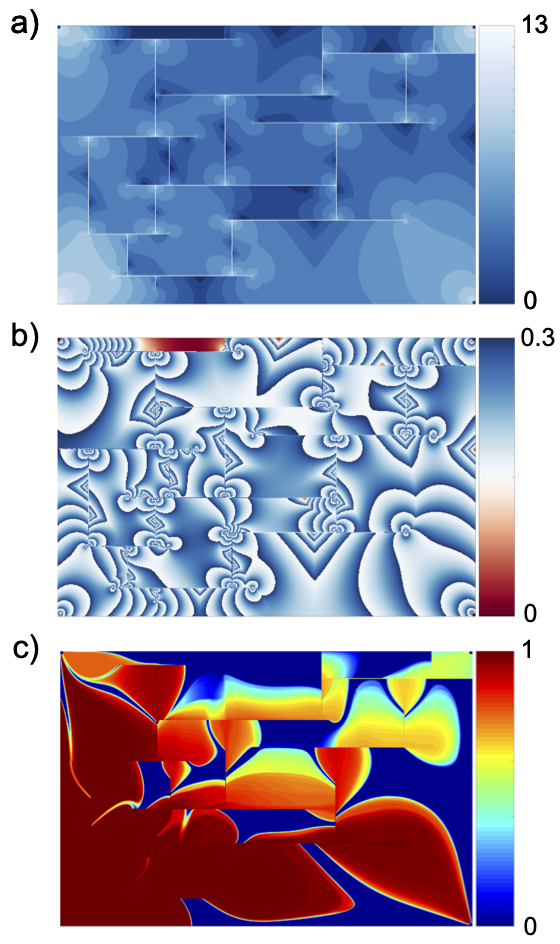Numerical Schemes and Algorithms
Adaptive Conservative Time Integration (ACTI)

For the solution of time-dependent flow and transport problems, explicit time-integration schemes are conceptually simple, but may necessitate small time steps to obtain stable and accurate numerical solutions. Particularly when dealing with stiff problems that involve strongly varying advection speeds, a locally adaptive selection of the time step becomes desirable. By subdividing a largest global time-step by powers of two, we have devised a new finite volume method, where small time-steps are taken in regions with small grid cells or high local velocities and larger steps are chosen in large cells or cells with small velocities. Time integration in the entire computational domain performed using an even queue keeping the different domain regions up-to-date and cell mass balances fulfilled. Recently, we have applied the ACTI method for Darcy flow in heterogeneous porous media involving velocity differences of several orders of magnitude (see figure) [external pageJenny 2020call_made].
Estimation of Probability Densities and Bootstrap
This research effort is focused on the development of accurate and computationally efficient estimators of multi-dimensional probability densities based on large datasets. Our approach results from a combination of parametric density models and statistical tests with the latter serving essentially as grid refinement criteria. Eventually a computationally efficient and accurate density estimator is resulting as has been documented by external page[Meyer 2018acall_made] in comparison with existing state-of-the-art estimators. The resulting estimator can be further applied for random number generation or bootstrapping of possibly conditional joint random number vectors given certain probability space components [external pageMeyer 2018bcall_made].
Rankine Hugoniot Solver
Jenny, Müller, and Thomann [external page1997call_made and external page1998call_made] developed a finite-volume approach, where viscous terms, source terms and cross flux variations (in multi-dimensions) are consistently treated as singularities at the cell centers. It has been proven that this solver is second order accurate and studies reveal that the error is approximately one order of magnitude smaller than other established methods of the same spatial order. Subsequently, the approach has been refined by [external pageLund et al. 2014call_made].
Immersed-Boundary Method
The numerical integration of the Navier-Stokes equations for incompressible flows has always been a central topic of numerical fluid mechanics. One possible approach consists in computing the pressure and the velocity vector at discrete grid points by solving a system of algebraic equations obtained by discretization of the momentum and continuity equations. Easy analytical manipulations provide then an independent Poisson equation for the pressure. In terms of computational efficiency, the solution of the elliptic pressure equation is the bottle neck in most cases and much effort has been made to improve the computational efficiency for this step. In terms of discretization, a Cartesian grid is favored and in order to deal with complex geometries, immersed boundary techniques have been developed. So far, however, it was not possible to preserve high spatial accuracy at immersed boundaries [external pageBonfigli 2011call_made]. Moreover, within the context of immersed boundaries, the efficient solution of the pressure Poisson equation becomes more involved, e.g. if a multi-grid technique is applied, an upscaling step is required [external pageBonfigli and Jenny 2010call_made].
